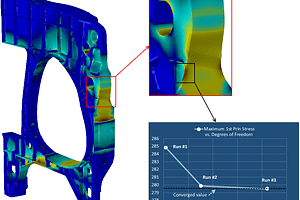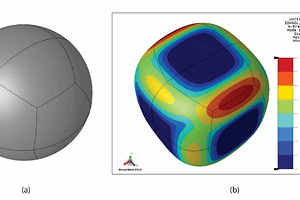ESRD is pleased to announce the release of StressCheck v10.2 Update 1, which improves on the high standard for numerical simulation set by StressCheck v10.2. Click here for the list of updates and improvements to StressCheck v10.2.
You also might be interested in
Today, we released product updates for StressCheck Professional and StressCheck-Powered[...]
Last week ESRD presented a webinar titled "High-Fidelity Stress Analysis for S.A.F.E.R. Structural Simulation". The webinar's recording is now available [...]
Contrary to various claims, IGA is not a new paradigm in the numerical approximation of partial differential equations; it is simply an alternative implementation of the p-version of the finite element method. IGA is one possible implementation of the p-version of the finite element method. Its distinguishing features are: (a) it retains the CAD geometry, (b) the basis functions are the same as those used for CAD representation, typically B-splines or NURBS, and (c) it provides for the enforcement of the inter-element continuity of the derivatives of the basis functions.
Looking for Resources?
Recent News & Events
Quick Links
Testimonials
-
“The addition of incremental theory of plasticity in StressCheck has greatly improved our ability to accurately predict the fatigue life of joints with interference fit fasteners and cold worked holes. This ability is especially important, not only in support of maintaining aging aircraft but also in analyzing some of the new cold working techniques that have been introduced in recent years.
Prior to this implementation, analysts often relied on closed-form approximations or simple factors that were often overly conservative and sometimes even unconservative when used in life prediction. Now, not only can we more accurately predict residual stresses in these complex structural joints, but we can also do so in a timely manner given the modeling and analysis efficiency that exists with a p-version FEA code such as StressCheck.”F-15 Structures Manager
The Boeing Company
 Serving the Numerical Simulation community since 1989
Serving the Numerical Simulation community since 1989 







